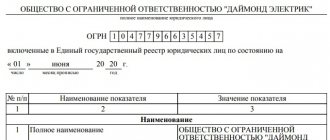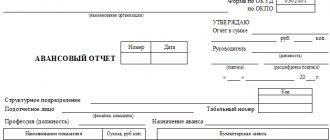Application Rules
To initiate the bankruptcy process of a legal entity, you must submit an application to
arbitration court in the region where the organization is registered. Bankruptcy can be initiated only if the amount of debt of a legal entity exceeds 300 thousand rubles. The total debt to all creditors is considered at once, taking into account fines and penalties.
Submission of the application is carried out after 90 days from the date of completion of the last action on mandatory payments.
To initiate the process, one application is not enough. It is necessary to attach a number of additional documents to it, namely, a certificate of registration of a legal entity, a certificate of debt and other documents, the number of which varies depending on the situation.
Application for bankruptcy of a legal entity
The current law on bankruptcy of legal entities regulates a specific procedure. According to procedural standards, a statement is drawn up on behalf of the debtor, which is signed by the head of the organization or an officially authorized person. This document recognizing the insolvency of the enterprise is sent to the Arbitration Court.
The application format must include the following information:
- the amount of debts of the company;
- volume of loan obligations;
- amount of salary debts;
- factual justification for the insolvency of a legal entity;
- information about judicial collections of the debtor;
- information about the debtor’s property, bank accounts and accounts receivable;
- candidacy of an arbitration manager;
- list (set) of documentation about the case.
The debtor is obliged to send similar copies of documents to all participants in the process and confirm all information with documents. All actions provided for by the procedural rules can be carried out by the applicant’s representative.
Then, after receiving the application, the Arbitration Court designates the date when the court hearing will take place - usually the consideration period is approximately a month.
First court hearing
At the first meeting, the arbitration considers the application for insolvency and makes a decision on the beginning of the first stage of bankruptcy.
The essence of this procedure is observation, which in standard cases lasts 4-6 months.
The court order for the introduction of surveillance includes the following points:
- recognition of the debtor's insolvency claims as valid;
- justification for the need to introduce an observation procedure;
- appointment of a temporary manager.
Filing an application by creditors
It is also worth considering the fact that a petition to declare a debtor bankrupt can also be submitted by creditors, but the conditions do not change. The minimum amount for bankruptcy is also 300 thousand rubles, but the debt to a specific creditor is counted, and not the total debt.
If applications are submitted simultaneously by the debtor and the creditor, then the court will consider the application that was filed earlier. The second statement can only proceed if the first one was made with errors.
Types of debt
A legal entity may have debt to various structures and individuals. This category includes the following types of creditors:
- banking and other financial organizations;
- government agencies (including tax and customs authorities);
- employees of the organization (current or dismissed);
- third parties (who, for example, the organization’s activities caused damage to their health or life).
To fulfill financial obligations, a certain period is allotted, after which additional interest and penalties will be accrued, and if the debt is not repaid within three months, the creditor has every reason to file an application with the court.
How to start bankruptcy proceedings?
The first step is filing an application with the arbitration court. However, before turning to the courts, make sure that you meet the legal requirements and fall under the bankrupt criteria.
For what reasons can you be considered bankrupt?
First of all, it is necessary to satisfy the formal requirements of the law - to have a debt exceeding 500 thousand rubles. Your next task is to prove to the court that you cannot pay the debt for objective reasons.
What arguments will the court take into account:
- loss of a job and inability to find a job with a similar salary;
- insufficient income to simultaneously support a family and pay off debt.
Your task is to act as openly as possible. There is no need to try to hide part of your income, bank deposits, or real estate from your financial manager. If dishonest actions on your part are revealed at the bankruptcy stage, the court will refuse to write off your debts. These include not only the concealment of property, but also the provision of deliberately false information to creditors: false income certificates, employment data, etc.
If the loan was taken out 2-3 months before the start of the bankruptcy procedure and no payments were received, the debtor’s actions will be regarded as fraud or fictitious bankruptcy. In accordance with Article 197 of the Criminal Code of the Russian Federation, fictitious bankruptcy is fraught with administrative or criminal liability
Filing an application to court
The arbitration court deals with bankruptcy cases. You must contact the department at your place of residence. A bankruptcy application and documents confirming the insolvency of an individual are submitted to the office.
The application is drawn up in the prescribed form, indicating the following information:
- name of the court;
- personal data of the applicant (full name, date of birth, passport details, registration address, telephone);
- information about the total amount of debt (debts for alimony, wages, compensation for harm to health are registered separately);
- the reasons that led the applicant to bankruptcy (claims and enforcement proceedings, in accordance with which money is written off from accounts, are also listed here);
- information about the debtor’s property and bank accounts (including outside the Russian Federation);
- the name of the self-regulatory organization of bankruptcy managers (it is the financial manager who implements the bankruptcy procedure; he must be selected in advance).
The application is accompanied by a list of creditors, an inventory of property and a number of other documents (a detailed list is presented at the beginning of the article). There are three ways to apply: in person, by mail or online.
Purpose of bankruptcy of a legal entity
Even when the amount of debt in bankruptcy is more than 300 thousand rubles, the management and founders of the organization do not always want the liquidation of the legal entity. In some cases, the priority option is to pay off the debt through restructuring the organization.
When the company’s financial performance deteriorated, liabilities began to prevail over assets, the only possible legal way to get rid of debt was the procedure for declaring the financial insolvency of a legal entity. If there is no desire to preserve the organization, then in most cases the process ends with the liquidation of the enterprise.
Process stages
Declaring a legal entity bankrupt usually takes place in two stages:
- observation;
- bankruptcy proceedings.
At the observation stage, an arbitration manager specially appointed by the court checks the activities of the organization to determine the legality of the transactions. Its task is to establish
whether the company is really insolvent, or whether there is a fact of fictitious bankruptcy.
In addition, the arbitration manager will check the state of financial indicators for the last two years to understand whether their deterioration was a natural process or whether there was a deliberate bankruptcy, when the financial insolvency of the company is caused by deliberate actions on the part of management or founders.
Bankruptcy proceedings involve the sale of company property at an estimated value at an auction specially organized for this purpose. The funds received are sent to creditors. If after the sale a certain amount of money remains, then it is returned to the management or founders of the legal entity, but if the proceeds from the sale of property are not enough to fully cover the debt, the remainder is usually written off.
Optional steps in the bankruptcy process of an organization are:
- financial recovery;
- external control.
They only occur when an attempt is made to save the company. If there is no such intention or possibility, then the indicated stages are absent.
Additional expenses
The procedure for declaring financial insolvency also involves additional expenses. For example, if bankruptcy of legal entities is initiated by creditors, then the amount of debt may increase due to the addition of legal costs. This is a fixed payment of 6 thousand at the beginning of the process, as well as a remuneration to the arbitration manager, which is usually calculated as a percentage of the amount of the debtor’s property being sold.
In addition, the costs of a professional lawyer can be considered as an additional expense, since representatives of legal entities rarely engage in such procedures on their own. To achieve the most favorable decision in your favor, you need to know all the intricacies of the law, so it is much easier and smarter to use the help of a credit lawyer.
Rating: 5.0.
Please wait…
What do the financial insolvency of a citizen and a company have in common?
Until 2015, only legal entities could have bankrupt status. Everything changed with the adoption of amendments to Law No. 127-FZ. This is the first similarity in the procedure for recognizing financial insolvency; it is regulated for individuals and legal entities by the provisions of one regulatory act. The arbitration court considers such cases.
The second similarity in the bankruptcy procedure for legal entities and individuals is that recognition of the status is permissible only after the appropriate court decision has been made. The basis for starting the process is an application from the debtor himself or the controlling body, the bankruptcy creditor. Before filing a claim, it is important to make sure that all procedural rules provided for by law are observed, and that the debt period is at least 90 days from the due date of payment.
Another similarity in the process of recognizing financial insolvency for companies and individuals is that after the court accepts the application, neither creditors nor collectors can charge penalties and fines, and all financial issues will be resolved by the arbitration manager.








